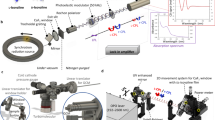Abstract
The physical, chemical and astrophysical processes by which chiral prebiotic molecules can be produced in interstellar dust and later delivered “safely” to the earth are considered. A laboratory analog experiment on the irradiation by circularly polarized UV light of mirror image molecules at the low temperatures of interstellar dust demonstrates that a substantial degree of chirality can be produced by irradiation of the dust by circularly polarized light from pulsars whose mean brightness and distribution in the Milky Way provide the energetic photons. The chirality is then preserved by cold aggregation of the dust into low density fragile nuclei. The thermal evolution of comets following them from birth through billions of years in the Oort cloud and back to the inner solar system results in preservation of dust organics in largely pristine form — even including effects of radiogenic heating. Physical justification for the cushioned transfer of fragments of the fluffy comets impacting the earth's atmosphere provides a conceptual basis for depositing significant concentrations of interstellar prebiotic molecules. Chiral amplification in water on the earth is presumed to be enhanced by this local concentration. If chiral molecules are discovered in comet nucleus material which will some day be returned to the laboratory, we may have in our hands the same building blocks from which we evolved.
Similar content being viewed by others
References
V.K. Agarwal, W. Schutte, J.M. Greenberg, J.P. Ferris, R. Briggs, S. Conner, C.E.P.M. v.d. Bult, F. Baas, Origins of Life 16 (1986) 21.
W.A. Bonner, Origins of Life and Evolution of the Biosphere 11 (1991) 59.
W.A. Bonner, F.Rubinstein, in: Prebiological Self Organization of Matter, eds. C. Ponnamperuma, F.R. Eirich, 1990, p. 35.
R. Briggs, G. Ertem, J.P. Ferris, J.M. Greenberg, P.J. McCain, C.X. Mendoza-Gómez, W. Schutte, Origins of Life and Evolution of the Biosphere 22 (1992) 287.
C.F. Chyba, Nature 343 (1990) 129.
C.F. Chyba, C. Sagan, Nature 355 (1992) 125.
C.F. Chyba, P.J. Thomas, L. Brookshaw, C. Sagan, Science 249 (1990) 366.
B.C. Clark, Origins of Life and Evolution of the Biosphere 18 (1988) 209.
J. Cronin, 1992, private communication.
J.M. Greenberg, in: Cosmic Dust, ed. J.A.M. McDonnell, Wiley, 1978, p. 187.
J.M. Greenberg, in: Comets and the Origin of Life, ed. C. Ponnamperuma, Reidel, Dordrecht, 1980, p. 111.
J.M. Greenberg, in: Comets, ed. L.L. Wilkening, Un. of Arizona Press, 1982, p. 131.
J.M. Greenberg, in: Cosmochemistry and the Origin of Life, ed. C. Ponnamperuma, Kluwer, Boston, 1983, p. 71.
J.M. Greenberg, Structure and evolution of interstellar grains, Scient. Amer. 250 (1984) nr. 6, 125.
J.M. Greenberg, in: The Galaxy and the Solar System, eds. R. Smoluchowski, J.N. Bahcall, M.S. Matthews, Un. of Arizona Press, 1986, p. 103.
J.M. Greenberg, J.I. Hage, Astrophys. J. 361 (1990) 260.
J.M. Greenberg, C.X. Mendoza-Gómez, The seeding of life by cometsAdv. Space Res. 12 (1992) nr. 4, 169.
E. Gruen et al, Nature 362 (1993) 428.
W. Hagen, L.J. Allamandola, J.M. Greenberg, Astroph. Space Sci. 65 (1979) 215.
J. Haruyama, T. Yamamoto, H. Mizutani, J.M. Greenberg, J. Geophys. Res. E8 (1993) 15.079–15.090.
W. Hermsen et al, Astrophys. J. Suppl. 92 (1994) 559.
H.B. Kagan, G. Balavoine, A. Moradpour, J. Mol. Evol. 4 (1974) 41.
J. Kissel, F.R. Krueger, Nature 326 (1987) 755
A. Kouchi, J.M. Greenberg, T. Yamamoto, T. Mukai, Astrophys. J. 388 (1992) L73.
J.N. Marcus, M.A. Olsen, in: Comets in the Post Halley Era, eds. R. Newburn et al., Kluwer, Dordrecht, 1990, p. 439.
C. X. Mendoza-Gómez, Ph.D. Thesis, Leiden, 1992.
M.J. Mumma, S.A. Stern, P.R. Weissman, in: Planets and Protostars, III, eds. E.H. Levy, J.J. Lunine, M.S. Matthews, Un. of Arizona press, 1992, p. 1177.
L. Orgel, Quant. Bio. 52 (1987) 9.
J. Oro, Nature 190 (1961) 389.
H. Rickman, Adv. Space Res. 9 (1989) nr. 3, 59.
G. Wald, Ann. N.Y. Acad. Sci. 69 (1957) 353.
A.L. Weber, Origins of Life 19 (1989) 317.
Ya.B. Zeldovich, Yu. P. Raizer, Physics of Shock Waves and High Temperature Hydrodynamic Phenomena, Academic Press, New York, 1967.
Author information
Authors and Affiliations
Rights and permissions
About this article
Cite this article
Greenberg, J.M., Kouchi, A., Niessen, W. et al. Interstellar dust, chirality, comets and the origins of life: Life from dead stars?. J Biol Phys 20, 61–70 (1995). https://doi.org/10.1007/BF00700421
Issue Date:
DOI: https://doi.org/10.1007/BF00700421




